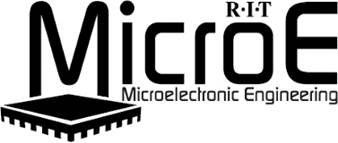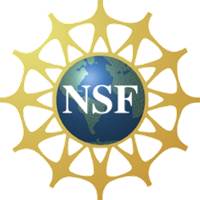Semiconductor Technology Enrichment Program (STEP)
Introduction
The STEP program is a developmental program designed to provide high school students an introduction to semiconductor technology in the last few weeks of school following standardized Advanced Placement (AP) science exams. The program is comprised of a number of short modules which may be chosen from an ala carte model, based on student/instructor interest and background.
The program, developed with the Rochester Institute of Technology / Microelectronic Engineering Outreach Office with funding from NSF DLR Grant #EEC-0530575 and NSF RET Grant #ECCS-0936976, is still in the beta testing phase, with several introductory modules outlined and drafted in order to obtain in-field feedback from instructors and students. These introductory materials are being provided to instructors with the understanding that ownership of the base concept and all materials are retained by Dan Fullerton under the NSF RET grant. Future opportunities and funding are being sought to expand and refine the program, which includes a subsidized teacher education component.
Description
This unit will provide an overview of the operation and fabrication of semiconductor devices and nanotechnology. Independent modules will provide background in basic concepts, systems, and applications. The structure of the class is focused on students developing deeper understandings of concepts and application of concepts introduced during their previous science foundation courses. Instructional time is designed to minimize instructor-centered lecture and maximize guided small group exploration and problem solving. A hands-on laboratory activity accompanies each module as a “performance of understanding,” with students conducting and then analyzing the results of their experiments. Each module concludes with short student reflective writing assignment designed to build real-world connections and enhance students’ conceptual framework. The program was recently described as part of the 2010 Frontiers in Education conference in the paper "Integrating Semiconductor and Nanotechnology Fundamentals into a High School Science Curriculum Module."
Required Pre-Requisites: AP Science (Physics B, Physics C, Chemistry, Biology)
Recommended Pre-Requisites: AP Physics C: Electricity and Magnetism
Suggested References:
- Fullerton, Dan. Honors Physics Essentials: An APlusPhysics Guide. Webster: Silly Beagle Productions, 2011. Print.
- Wolf, Stanley, and Tauber, R.N. Silicon Processing for the VLSI Era Volume I, Sunset Beach: Lattice Press, 1986.
Course Objectives
- Introduce students to basic engineering principles.
- Introduce students to science and engineering career opportunities.
- Develop deeper understandings of science concepts through analysis of applications.
- Develop vocabulary needed to converse in the semiconductor and nanotechnology industries.
- Develop skills needed to explore high-tech concepts independently.
- Develop skills needed to work productively as part of a research team.
Course Structure
Each module is designed around a five-period (~45 minute) week, with one or two periods of each week dedicated to hands-on work. Each unit begins with an introductory lecture which includes a general outline of the week’s agenda and goals. Students are then broken into groups to explore the unit through a variety of resources and activities provided by the instructor. Based on the differentiated backgrounds of both students and instructors, it is expected that the various modules will require considerable instructor flexibility in the amount of material provided in lecture vs. independent learning formats, as well as overall scaffolding across individuals, groups, and classes. For this reason, modules are designed, within the limits of practicality, as ala carte selections from which the instructor may pick and choose.*
Student Learning Outcomes
- Students will have a basic understanding of engineering principles.
- Students will appreciate the wide variety of careers available in the science and engineering disciplines.
- Students will demonstrate deeper understandings of fundamental concepts in science.
- Students will write and converse using vocabulary specific to the semiconductor and nanotechnology industries.
- Students will explore high-technology concepts independently.
- Students will work productively as part of a research team, and describe salient characteristics of productive and efficient teams.
Culminating Activity
The unit is designed with an optional half-day culminating activity at the RIT Semiconductor & Microsystems Fabrication Laboratory, providing students an opportunity to work hands-on with a variety of high-tech semiconductor fabrication equipment which may include, but is not limited to, plasma enhanced chemical vapor deposition of a dielectric, microlithographic patterning, reactive ion etching of a dielectric film, scanning electron microscope (SEM)/ electron dispersive spectroscopy (EDS) analysis, physical vapor deposition (PVD) of a conducting thin film, and demonstration of current high technology research projects.
*Note: Although modules are designed as ala carte stand-alone instructional programs, based on pre-requisite knowledge of students certain modules may be more or less appropriate for the given audience. For this reason, the instructor may need to extend or compress timelines for individual modules, or provide enhanced background information and scaffolding as part of the module itself.



